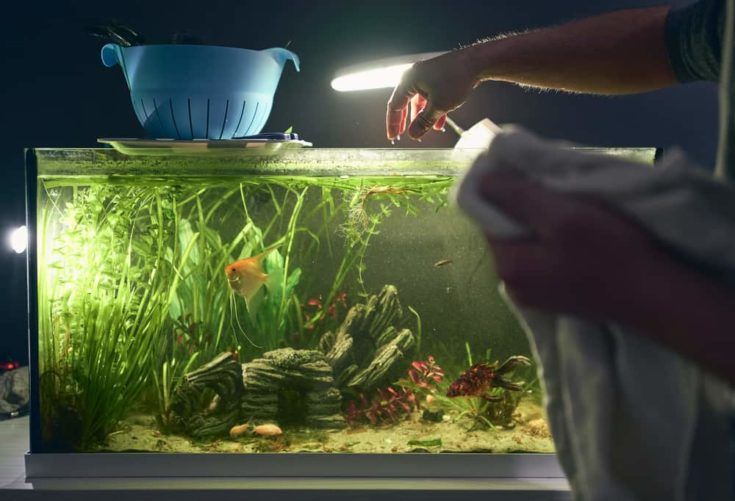Owning an aquarium is a rewarding hobby, offering both aesthetic pleasure and a sense of tranquility. However, maintaining a healthy and thriving aquarium can be challenging, especially for busy individuals. The key to balancing a hectic lifestyle with aquarium maintenance schedule. This comprehensive guide will help you create an effective aquarium maintenance schedule that fits seamlessly into your busy life.
Why an Aquarium Maintenance Schedule is Important
A well-maintained aquarium ensures a healthy environment for your aquatic life. Regular aquarium maintenance helps prevent issues such as algae overgrowth, poor water quality, and fish diseases. For busy people, having a structured aquarium maintenance schedule can save time, reduce stress, and ensure that no essential tasks are overlooked.
Understanding Your Aquarium’s Needs
Before creating a schedule, it’s important to understand the specific needs of your aquarium. Factors to consider include:
- Tank Size: Larger tanks generally require less frequent water changes but more time for each maintenance session.
- Fish Species: Some fish are more sensitive to water conditions and may require more frequent monitoring.
- Plant Life: Live plants can affect water chemistry and may require additional care.
- Filtration System: The type of filter you use can impact the frequency and type of aquarium maintenance needed.
Daily Tasks: 5-10 Minutes
1. Feeding Fish
- Feed your fish once or twice a day with the appropriate amount of food.
- Observe your fish during feeding to monitor their health and behavior.
2. Checking Equipment
- Ensure that all equipment (filters, heaters, lights) is functioning correctly.
3. Quick Visual Inspection
- Check for any immediate issues such as fish health problems, algae growth, or unusual water conditions.
- Make a mental note or jot down any observations that may need attention during your weekly aquarium maintenance.
Weekly Tasks: 30-60 Minutes
1. Water Testing
- Test water parameters such as pH, ammonia, nitrite, nitrate, and hardness.
- Adjust water conditions as necessary to maintain a healthy environment.
2. Partial Water Change
- Replace 10-20% of the tank water with fresh, dechlorinated water.
- Use a siphon to remove debris and waste from the substrate during the water change.
3. Cleaning the Glass
- Ensure that the scraper or cleaner is suitable for your tank type to avoid scratches.
4. Pruning and Trimming Plants
- Trim any overgrown or dead plant leaves to promote healthy growth.
- Remove any plant debris from the water to prevent it from decaying and affecting water quality.
5. Checking and Cleaning Filters
- Rinse mechanical filter media in tank water to remove debris without killing beneficial bacteria.
- Check for clogs or buildup that could impair the filter’s efficiency.
Monthly Tasks: 1-2 Hours
1. Deep Cleaning
- Thoroughly clean all equipment, including heaters, lights, and filters.
2. Comprehensive Water Testing
- Perform a more detailed water test, including parameters not checked weekly (e.g., phosphate, iron).
- Make any necessary adjustments based on the results to maintain a balanced ecosystem.
3. Rearranging Decorations
- Clean and rearrange aquarium decorations to prevent dead zones where debris can accumulate.
- Ensure that decorations are securely placed to avoid harming fish.
4. Inspecting Fish Health
- Conduct a thorough inspection of all fish for signs of disease or stress.
- Quarantine any sick fish to prevent the spread of illness to the rest of the tank.
Tips for Sticking to Your Schedule
1. Use a Planner or App
- Keep track of your aquarium maintenance tasks with a physical planner or a mobile app designed for aquarium care.
2. Delegate When Possible
- If you have family members or roommates, delegate some tasks to share the responsibility.
- Hire a professional aquarium maintenance service for periodic deep cleans if your schedule is extremely tight.
3. Simplify Your Setup
- Choose hardy fish and plants that require less intensive care.
- Invest in high-quality, low-maintenance equipment to reduce the frequency of aquarium maintenance tasks.
4. Stay Organized
- Keep all your aquarium supplies in one place for easy access.
- Label and date all your testing kits, chemicals, and maintenance tools to ensure they are used correctly and timely.
5. Learn and Adapt
- Continuously educate yourself about care to improve your aquarium maintenance routine.
- Be flexible and adjust your schedule as needed based on the specific needs of your aquarium and lifestyle.
Inference
Creating an aquarium maintenance schedule that fits into a busy lifestyle is entirely possible with careful planning and organization. By breaking down tasks into daily, weekly, monthly, and seasonal activities, you can ensure that your aquarium remains healthy and beautiful without overwhelming yourself. Happy fishkeeping!







